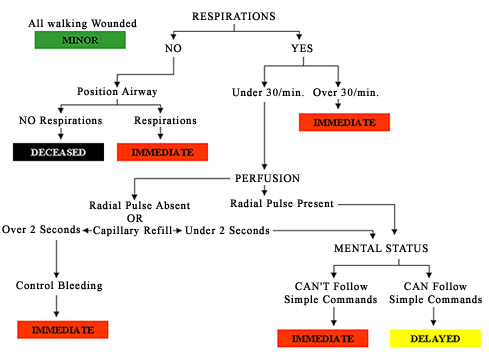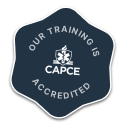
A grandstand holding more than 200 people at a high school football field has collapsed, resulting in numerous injuries of all different levels. You and your partner arrive first to the chaotic scene. You are overwhelmed as you notice the number of patients needing help, knowing there are not enough resources available to treat them all. Fortunately, there is a simple triage system that gives you a place to begin treating the situation: START triage. START (Simple Triage and Rapid Transport) is the most commonly used triage algorithm in the US. It is a scene management system that is used when the number of patients exceeds the resources of the on-scene responders. As a first responder, you may be called to a scene like this where you will be responsible for making patient contact and categorizing each person based on the severity of their condition. Your goal is to triage each victim in a timely manner, determine their need for transport, and to effectively communicate with dispatch so that they can alert the necessary resources. As mentioned, triage involves categorizing patients based on their injuries. There are four categories:
Red (Immediate): The patient has an immediate life threat and must have rapid transport in order to survive.
Yellow (Delayed): The patient needs transport, but can wait 1-3 hours.
Green (Ambulatory): The patient can wait more than 3 hours to be transported, or may not need transportation.
Black (Dead): No transport. The patient should only be moved if it is necessary to reach other live victims.
What to do:
As you approach each victim, you should spend no more than 30 seconds determining what category they fall into. To begin, yell out to anyone who can walk, and have them go to a designated area. That takes care of the green category. For everyone else, check RPM:
RESPIRATORY RATE: Are they breathing? And if so, is it less than 30 breaths/min?
PULSE: Do they have a radial pulse? Is their capillary refill less than 2 seconds?
MENTAL STATUS: Can they obey simple commands?
If they are not breathing, reposition the airway and check again. If they are still not breathing, label them black. If the answer to any of the questions is NO, label them Red. If the answer to each question is YES, label them Yellow. Below is a diagram that illustrates each step. Do not perform CPR or spend time treating injuries. If a person is bleeding uncontrollably from an extremity, apply a tourniquet, and move on to the next patient.
Triage is a simple, yet valuable tool for mass casualty incidents that can save lives and ensures that the most critical patients receive care first.

* START triage was developed by HOAG memorial hospital and Newport Beach Fire Department.
- Dozens of courses and topics
- State-specific requirements
- We report to CAPCE in real time


